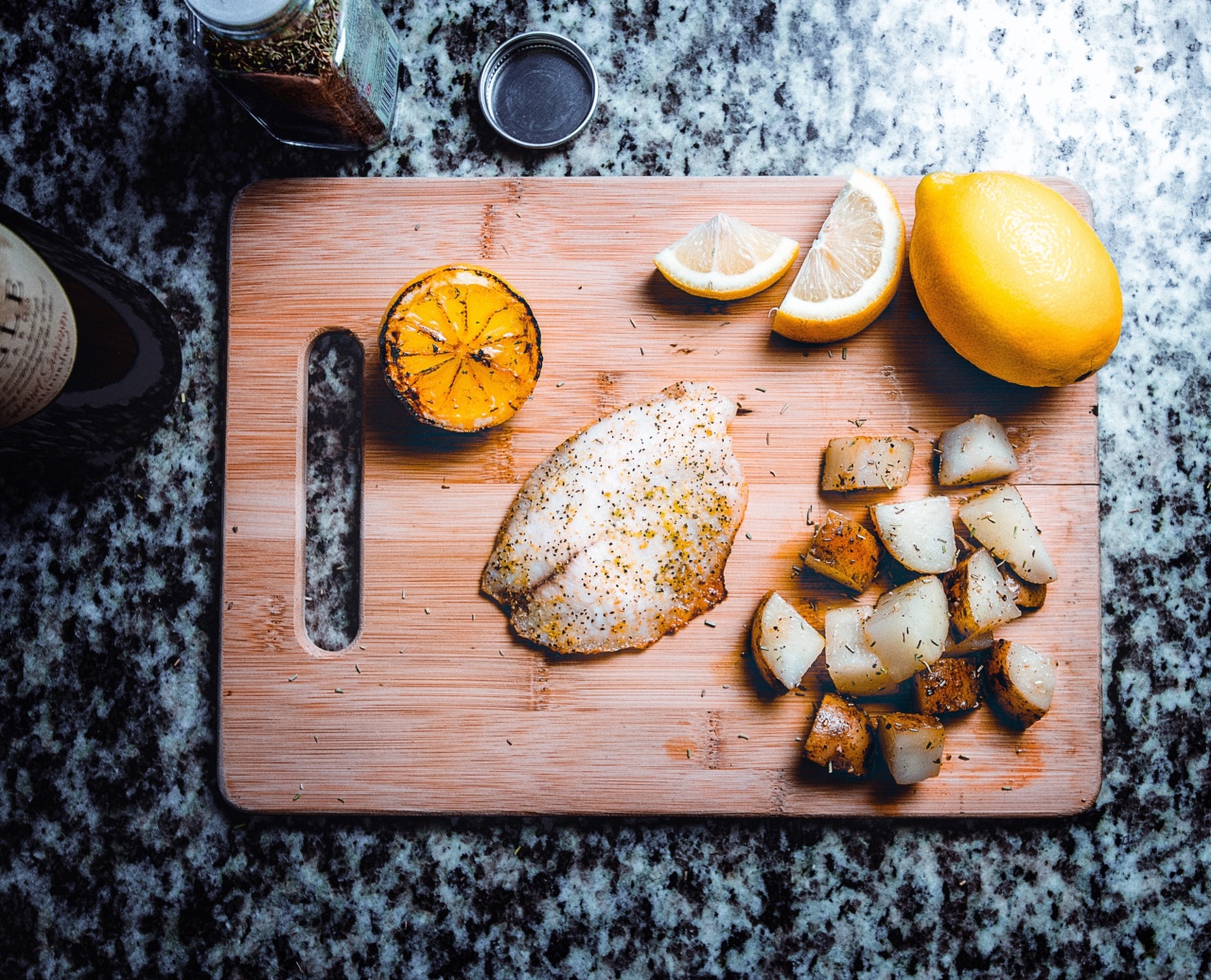Many health experts and nutritionists recommend including fish in our diet due to its numerous health benefits. Fish is a fantastic source of high-quality protein, omega-3 fatty acids, vitamins, and minerals.
In fact, regular consumption of fish has been associated with a reduced risk of chronic diseases such as heart disease, stroke, and even certain types of cancer.
Why Fish?
Fish is a low-fat, nutrient-rich food that is packed with essential nutrients such as omega-3 fatty acids, vitamin D, iodine, selenium, and other minerals.
Omega-3 fatty acids are a type of polyunsaturated fat that play a crucial role in promoting optimal brain function, maintaining a healthy heart, reducing inflammation, and supporting overall well-being.
Choosing the Right Fish
When it comes to selecting fish, it’s important to prioritize the ones that are rich in omega-3 fatty acids while avoiding those that may contain heavy metals or other contaminants.
Some of the best fish options in terms of omega-3 content include salmon, mackerel, sardines, trout, and tuna. These varieties are not only delicious but also provide the maximum nutritional value.
Fresh vs. Frozen Fish
Although fresh fish may seem like the obvious choice, frozen fish can be just as nutritious. In fact, frozen fish often retains its freshness and nutritional value as it is quickly frozen right after catching.
This freezing process helps to preserve the omega-3 fatty acids and essential nutrients, ensuring that you receive all the health benefits even if fresh fish is not readily available.
Grilling Fish
Grilling is a popular cooking method because it enhances the natural flavors of fish without adding excessive fat or calories. It is important to preheat the grill and lightly oil the grates to prevent the fish from sticking.
Season the fish with your choice of herbs, spices, or marinades for extra flavor. Place the fish on the grill and cook for a few minutes on each side until it’s opaque and easily flakes with a fork.
Baking Fish
Baking is a simple cooking method that requires minimal effort and still delivers fantastic results. Preheat the oven to the desired temperature and season the fish with herbs, spices, or a squeeze of lemon.
Place the fish on a baking sheet lined with parchment paper or aluminum foil to prevent sticking. Bake the fish until it reaches an internal temperature of 145°F (63°C) and the flesh is tender and flaky.
Poaching Fish
Poaching fish is a gentle cooking method that involves simmering the fish in a flavored liquid. It helps to retain the moisture and delicate flavors, making it an excellent option for delicate fish fillets.
Bring a flavorful liquid such as vegetable broth, white wine, or a combination of herbs and spices to a simmer. Add the fish fillets and cook for a few minutes until they are opaque and firm.
Steaming Fish
Steaming fish is a healthy and straightforward cooking method that preserves the fish’s natural flavor, texture, and nutrients. Place a steamer basket or a bamboo steamer over a pot filled with a small amount of boiling water.
Season the fish with your favorite herbs and spices and place it in the steamer. Cover and steam for a few minutes until the fish is opaque and easily flakes with a fork.
Pan-Frying Fish
Pan-frying fish creates a crispy exterior while keeping the interior moist and tender. Start by seasoning the fish with salt, pepper, or any other desired seasonings. Heat a small amount of oil or butter in a non-stick skillet over medium heat.
Add the fish to the pan and cook for a few minutes on each side until it’s golden brown and cooked through. Remember to use minimal oil or opt for healthier alternatives like olive oil.
Broiling Fish
Broiling is a quick and easy cooking method that works well with thicker fish fillets or steaks. Preheat the broiler to high and position the oven rack so that the fish will be 4-6 inches away from the heat source.
Season the fish and place it on a broiler pan or a baking sheet lined with foil. Broil for a few minutes on each side until the fish is cooked through and slightly browned.
Frying Fish
Frying fish is a popular method, but it should be done sparingly due to the added oil and potential increase in calorie content. If you choose to fry fish, opt for healthier oils with a high smoke point, such as canola or peanut oil.
Ensure that the oil is hot enough to create a crispy exterior without absorbing excess oil. After frying, place the fish on a paper towel to absorb any excess oil.
Grilled Salmon
 .
.
Grilled salmon is a simple yet flavorful dish that showcases the natural richness of the fish. Start by marinating the salmon in a blend of olive oil, lemon juice, garlic, and your choice of herbs for about 30 minutes.
Preheat the grill and lightly oil the grates. Place the salmon skin-side down and grill for about 4-6 minutes per side until it’s cooked to your preferred doneness. Serve with a side of roasted vegetables or a fresh salad for a nutritious meal.
Conclusion
Including fish in your diet is an excellent way to promote optimal health and reap the many benefits it offers.
Whether you choose to grill, bake, poach, steam, pan-fry, broil, or occasionally fry fish, there are numerous ways to prepare it to suit your taste preferences. Experiment with different methods and flavors to make fish a regular and enjoyable part of your diet.




























